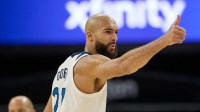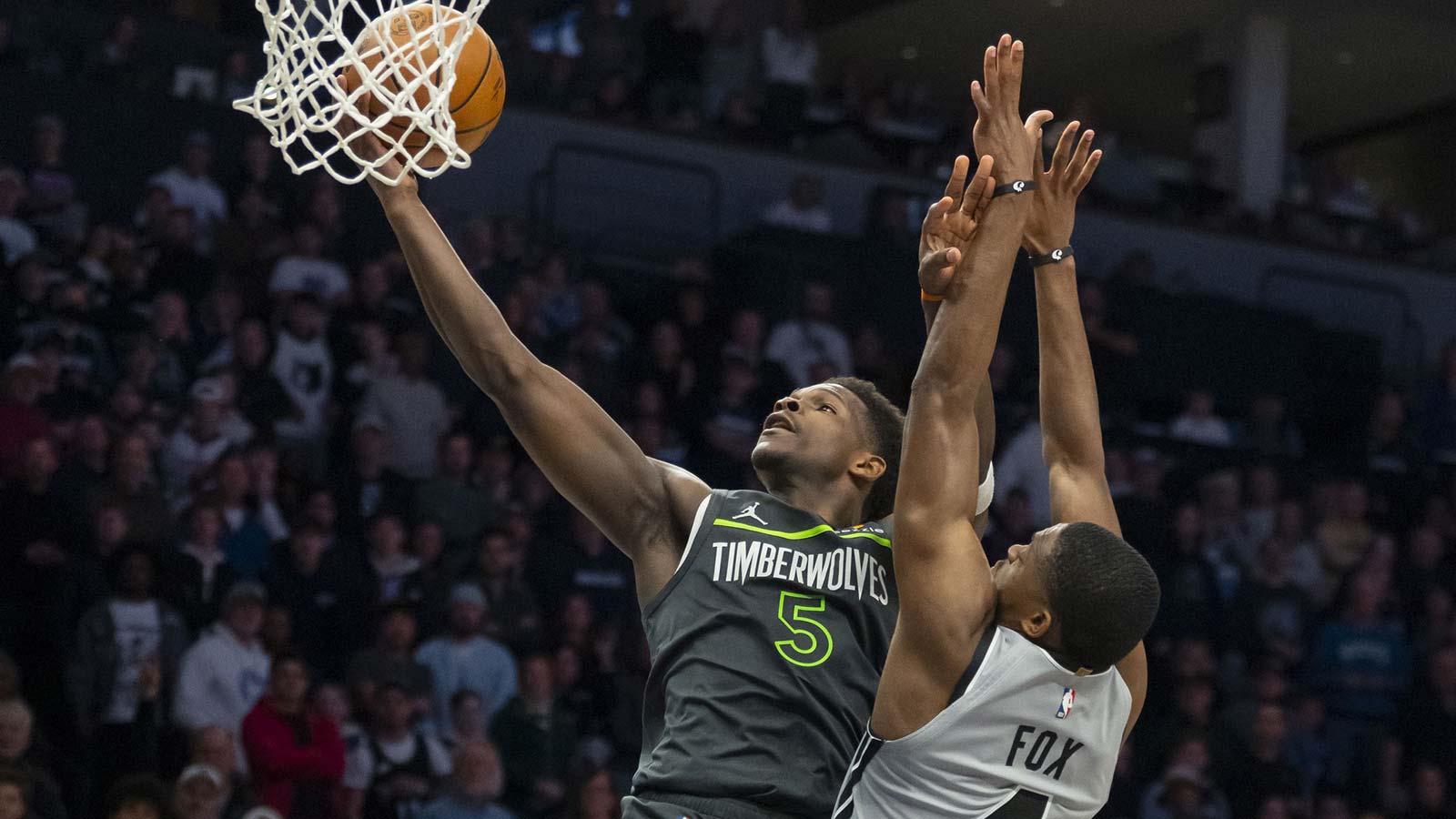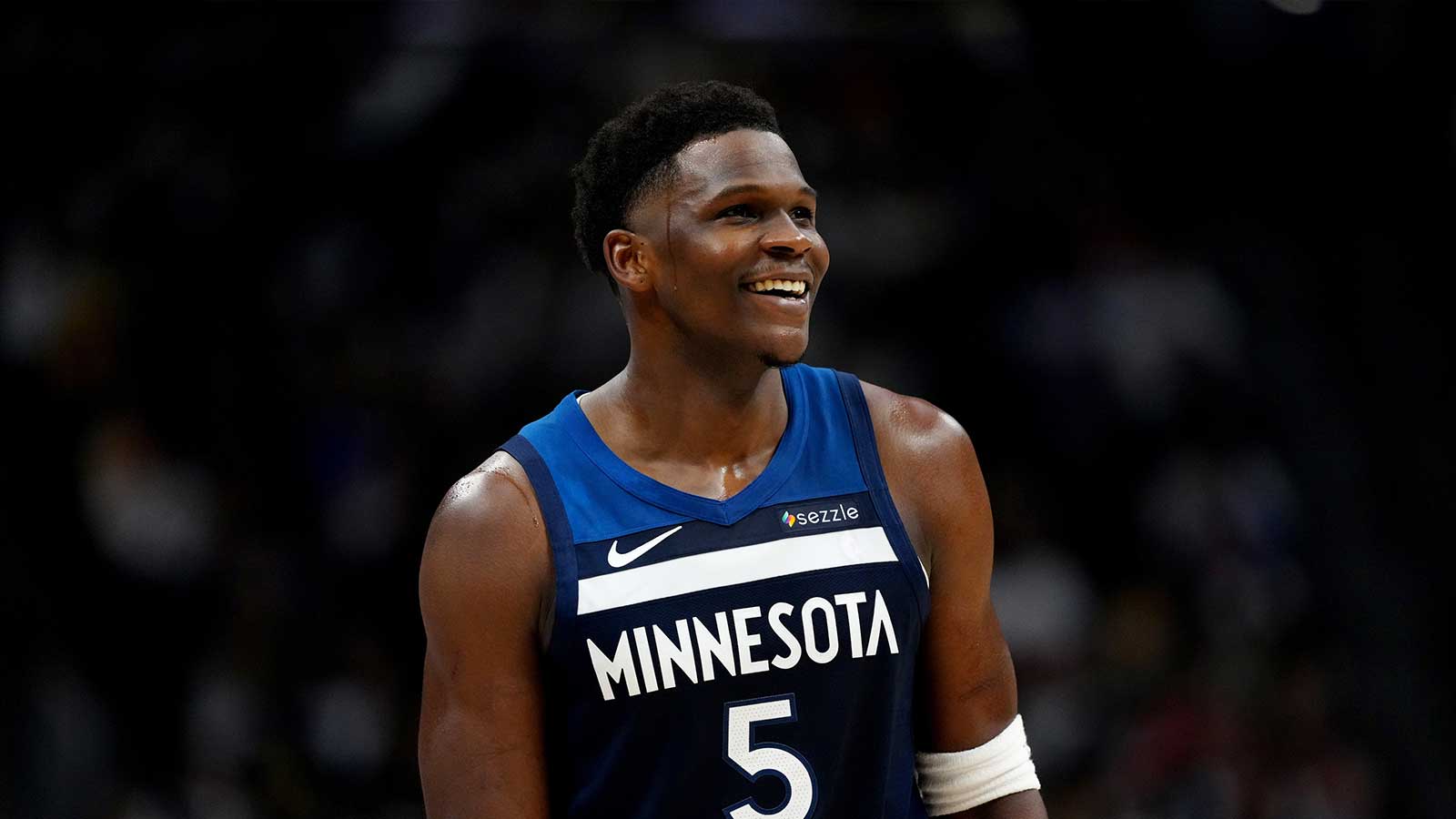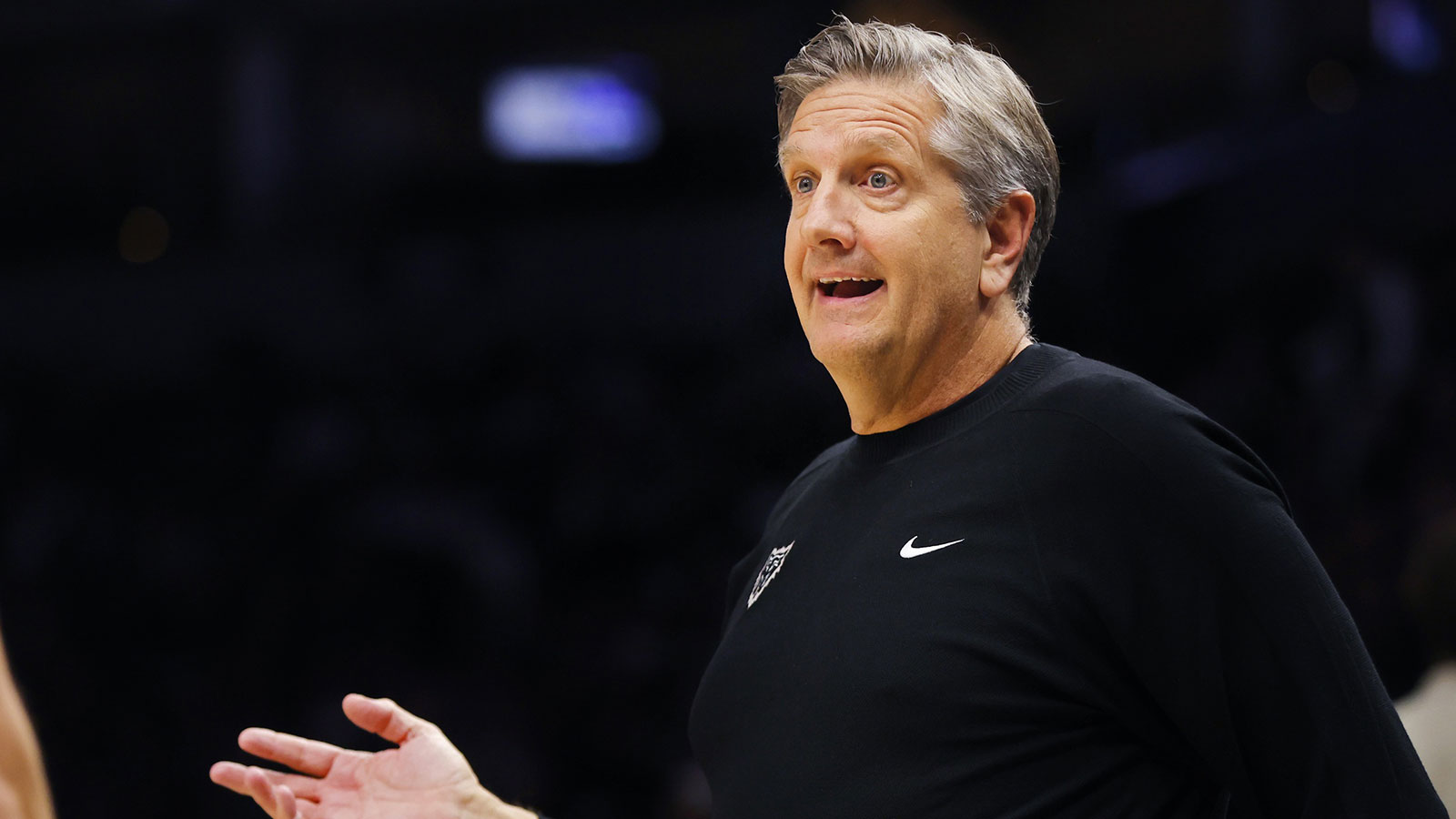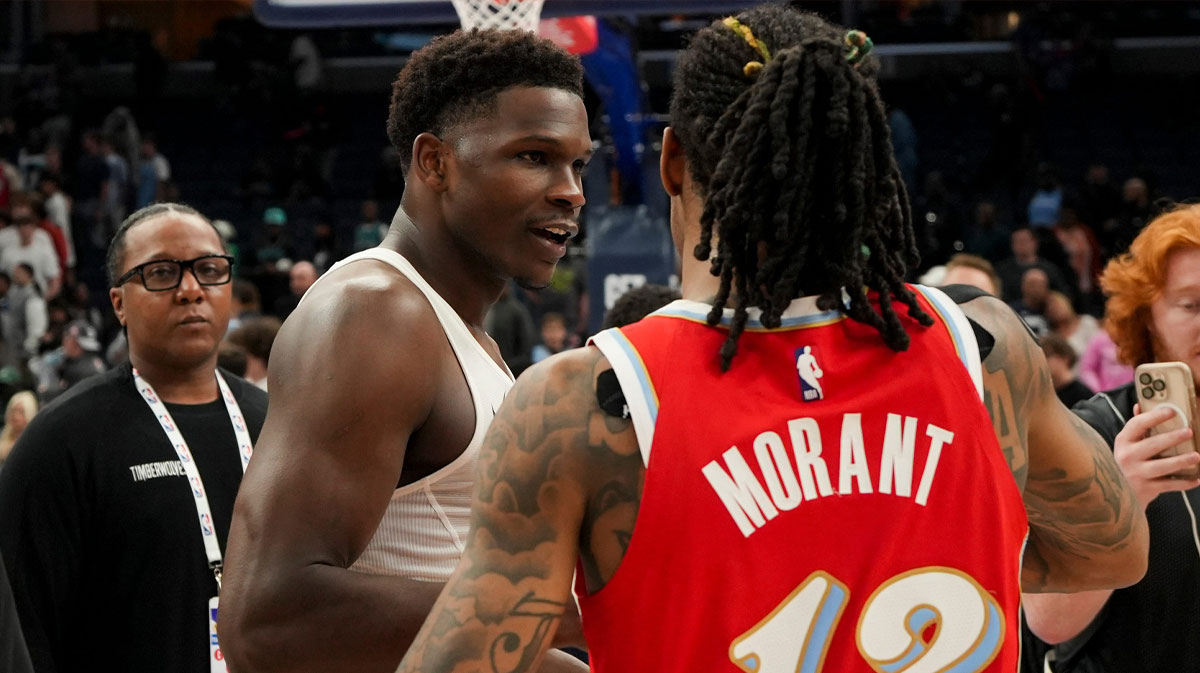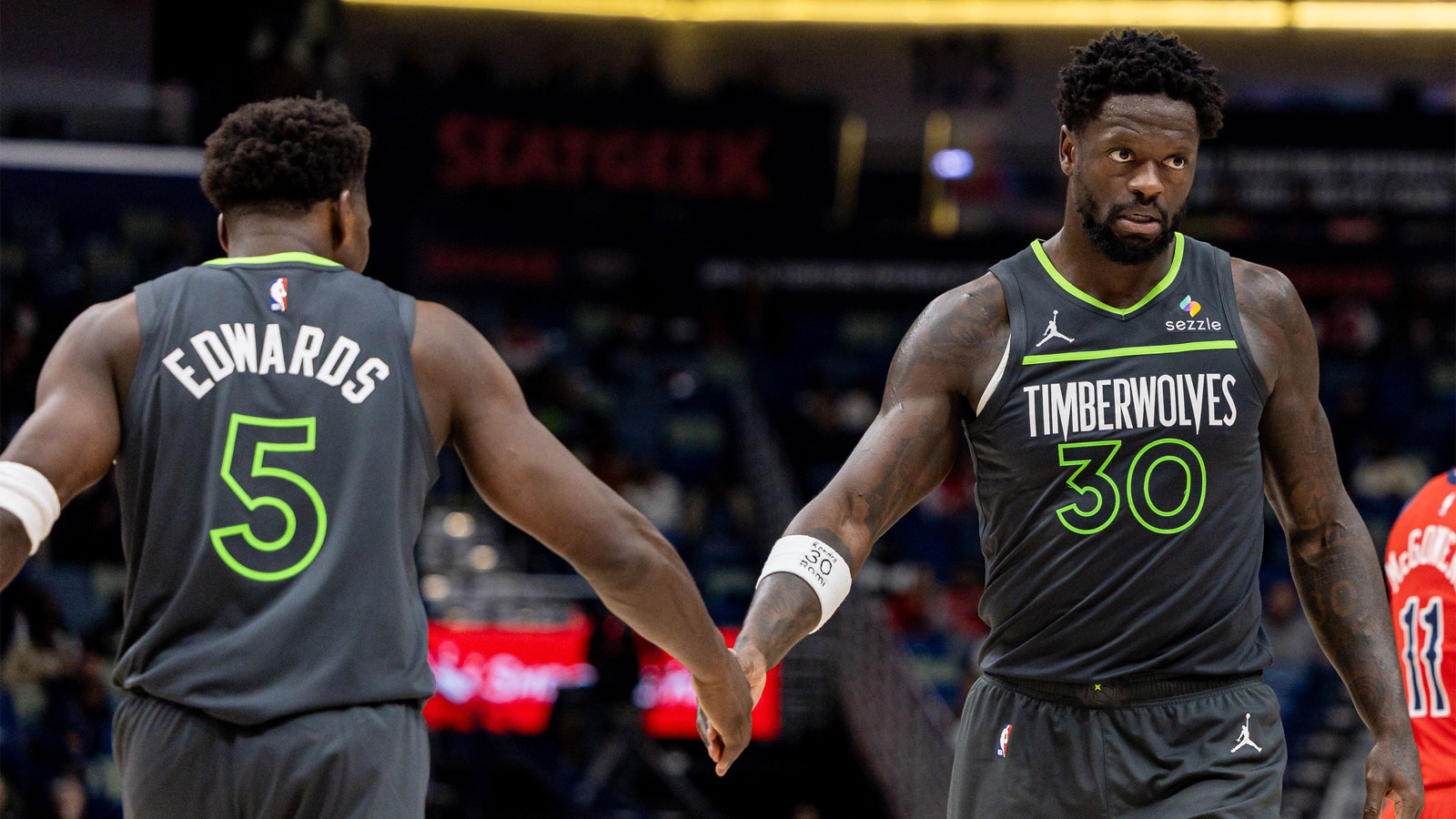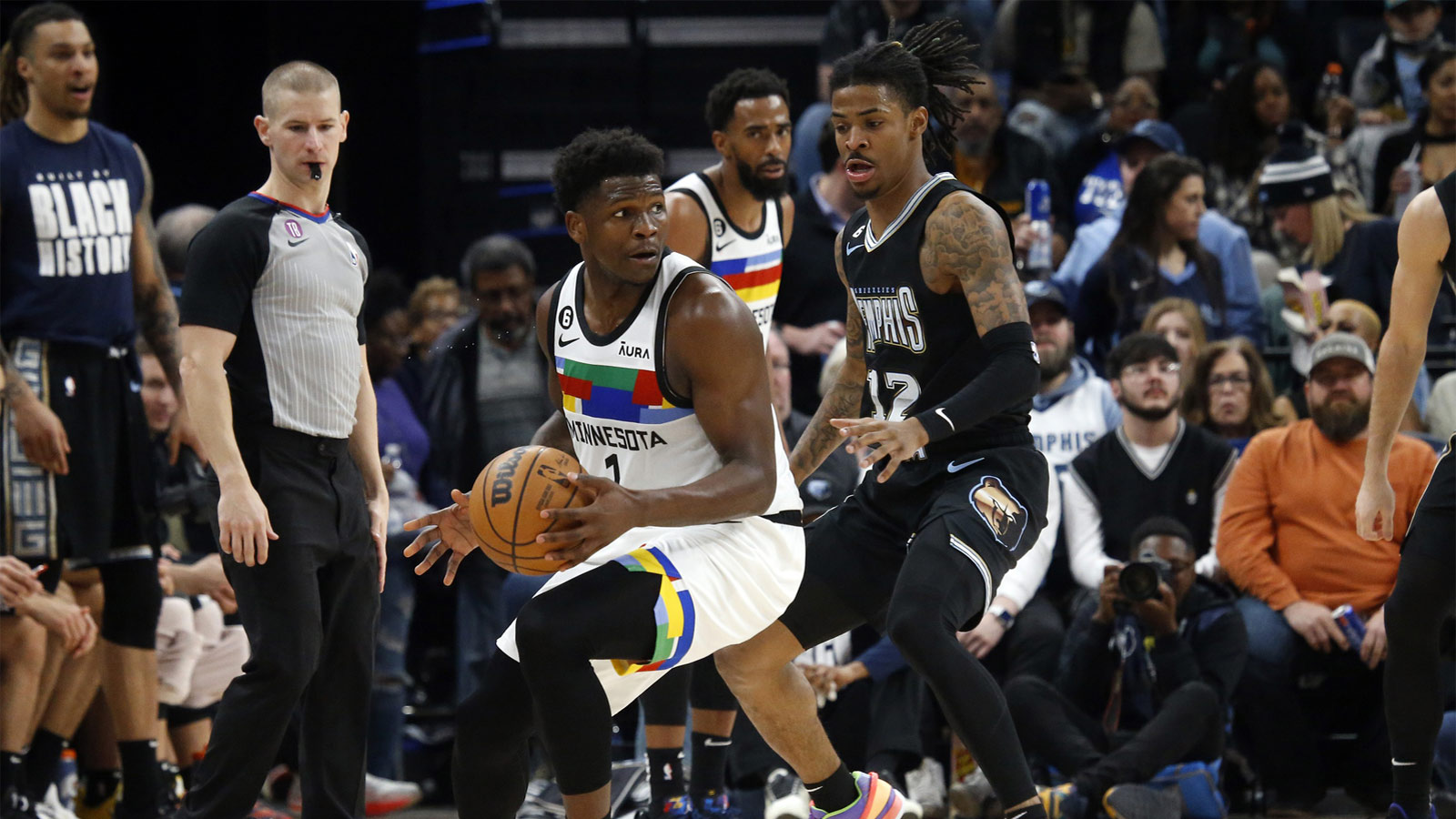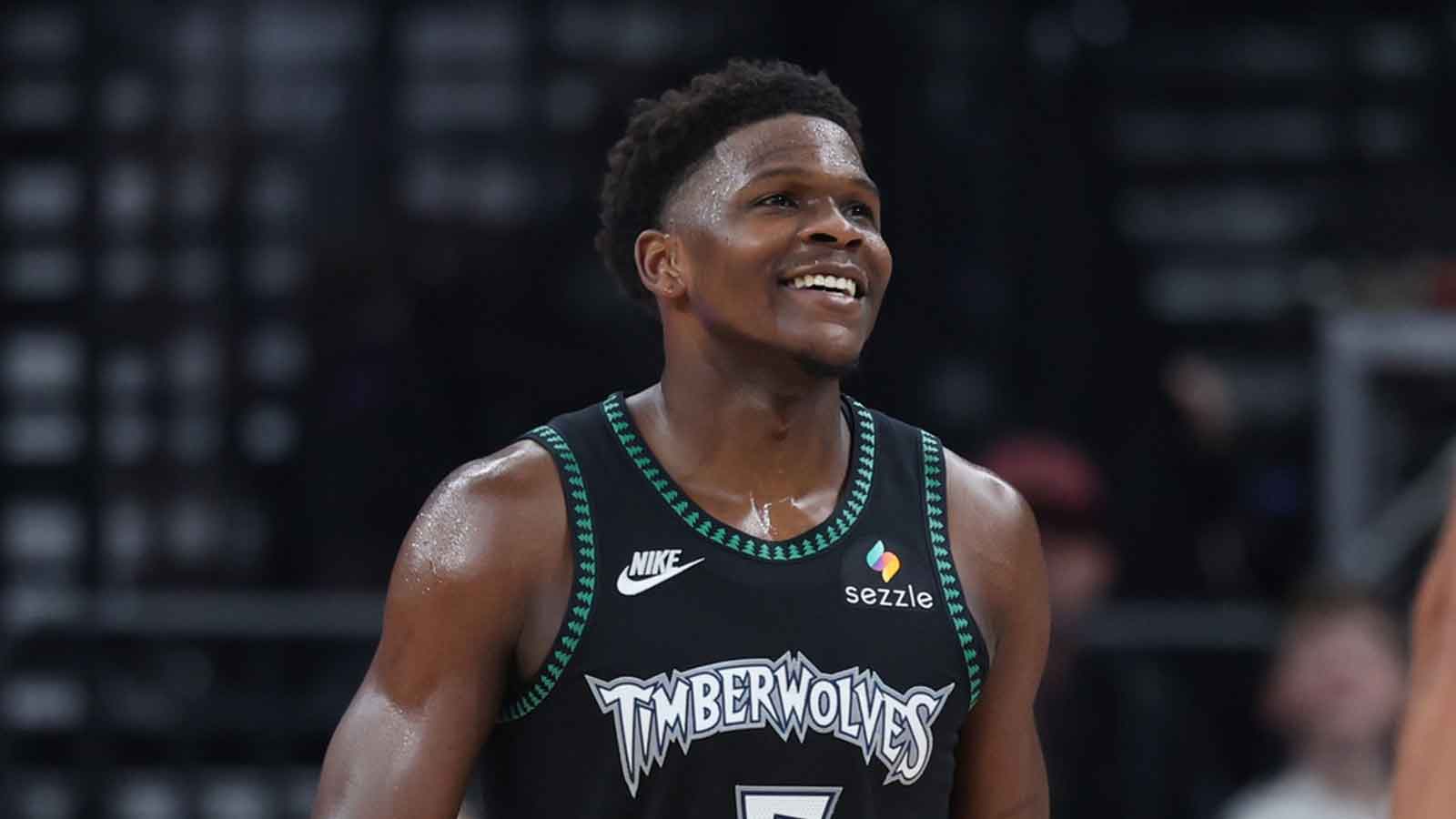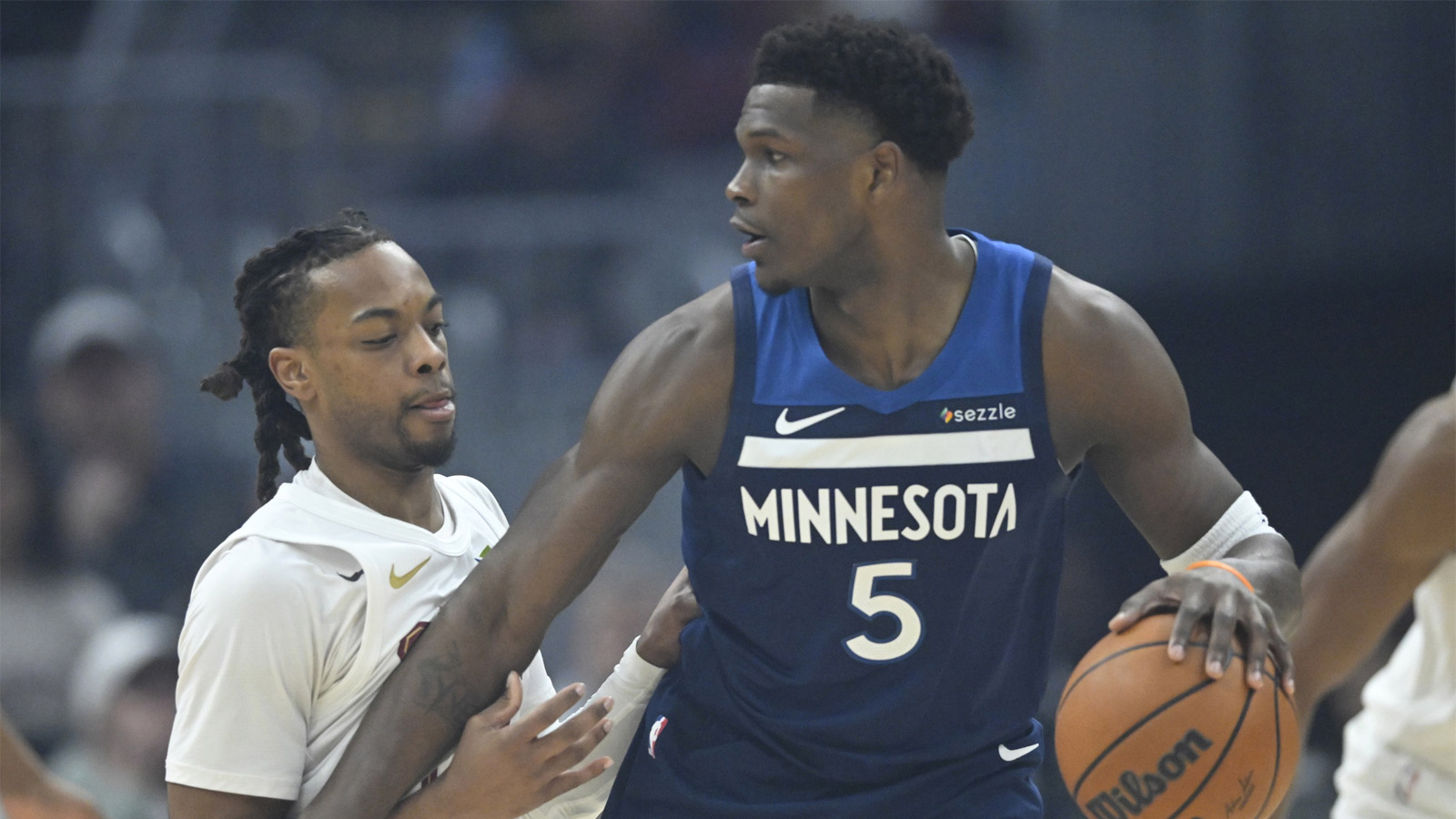The Minnesota Timberwolves entered the 2024 NBA All-Star break as perhaps the biggest surprise story in the NBA. NBA media shared heavy doubts about the team’s fit while overlooking their vast collection of talent and adaptability. The team came into the season with vastly improved maturity, which has translated into an elite defense, ranking first in the entire league with a 108.2 defensive rating. Currently, atop the Western Conference, fans and media should be cautiously optimistic about the Timberwolves through the first half of the season. Here are our Timberwolves' mid-season grades on their 2024 report card including stars like Rudy Gobert, Karl-Anthony Towns, and Anthony Edwards.
Rudy Gobert, Jaden McDaniels and Nickeil Alexander-Walker
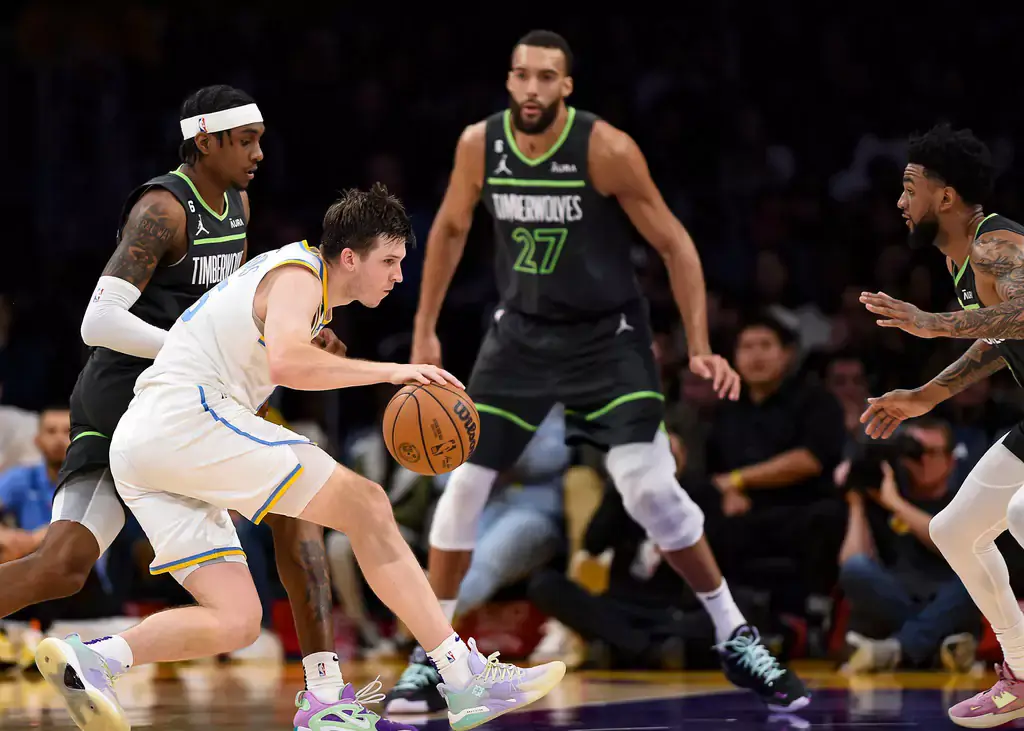
Behind the Timberwolves’ stellar defense lies two strong components. The Timberwolves defense is propped up by two elite point-of-attack defenders and the league’s best anchor.
Let’s start with Rudy Gobert, the heart of the Timberwolves defensive identity. Gobert’s prominently known for his shot-blocking at the rim and his ability to be a help-side defender. Within six feet of the rim, Gobert’s presence is undeniable. On 7.8 shots defended per game around the basket, Gobert is limiting opponents to shooting just 48.6%. That is a 14.9% drop off from league average.
However, the three-time Defensive Player of the Year does more than just protect the paint. The Timberwolves’ anchor has been phenomenal on all three levels.
Rudy Gobert’s defensive metrics fron the first-half of the season. Dominant on ALL levels pic.twitter.com/eARtZkmnyx
— Sheldon Wohlman (@3swohlman) February 22, 2024
His increased activity level this season compared to last has resulted in the world’s best defender contesting 18.5 shots per game this season.
Minnesota’s stifling defense isn’t just solely reliant on Rudy Gobert’s presence. Despite his dominance, two essential cogs in the Wolves’ defense are their top-tier point-of-attack stoppers. Jaden McDaniels and Nickeil Alexander-Walker make the front line of the Wolves defense tough to beat. McDaniels specifically wins with his length and size. Typically overshadowing his matchup, Jaden McDaniels lives up to his nickname, the seatbelt. His ability to navigate screens, stay attached to the league’s shiftiest players, and challenge shots from all over the floor pin him as a likely All-Defense team member this season.
Nickeil Alexander-Walker is a lesser-known player nationally, but Timberwolves fans know how essential he is. Having taken big strides forward offensively, NAW’s physical tools make him a perfect defensive piece off the bench. Despite not being quite as tall or lengthy as McDaniels, Alexander-Walker impacts the game differently. His lateral quickness stands out as his top defensive tool.
NAW’s quickness allows him to aggressively chase over screens, stay connected to shooters, and most importantly defend without fouling. Unlike McDaniels, Alexander-Walker rarely finds himself in foul trouble. Behind Minnesota’s elite on-ball defenders and perfect defensive anchor, the Timberwolves are poised to remain the top defense in the league down the stretch.
Defensive Grade for Gobert, McDaniels and Alexander-Walker: A+++
Offensive identity
Despite the best record in the Western Conference, the Timberwolves still have room to grow as a team. The offensive end of the floor has been a bit of a battle this season. At times, Minnesota’s offense thrives through good structure. The usage of set plays and a heavy dose of Mike Conley and Rudy Gobert pick-and-rolls pins the Wolves as a team with reliable actions come playoff time.
However, when playing solely in the flow, Minnesota has moments that make you question the team’s plan of attack. Occasionally settling with contested shots, driving into traffic and some errant passes paint the team as discombobulated and out of sync. With their starry starting five, the Wolves should rank a bit better than 18th in points per game and 17th in offensive rating.
While likely not poised to be a top-ten offensive unit, it’s imperative the Timberwolves trend upward offensively in the second half of the season.
By running more set plays that create determined spacing and timing, the Wolves have the infrastructure to succeed. With a bevy of talented ball handlers, some high-end shooting talent, and a collection of great screen-setters, Minnesota can definitely become a top-12 offense or so by season’s end with a few simple adjustments to their offensive flow.
Offensive identity grade: B-
Karl-Anthony Towns’ adjustments
Versatility has arguably become Karl-Anthony Towns’ greatest ability. The sharpshooting seven-footer has grown tremendously this season on the defensive end. Adjusting to playing the four meant a world of changes for KAT’s defensive game-planning. How to defend DHO’s, guard on-ball screens, playing as a help-side defender, etc. has all changed for the All-Star big man.
Towns’ has really taken on the challenge this season and has done a great job in what should be deemed the best defensive season in his NBA career. One of the big advantages the Wolves have defensively is when Towns rotates in to tag another center in the pick-and-roll. An extra seven-footer on the court gives the Wolves an added layer of rim protection that other teams simply do not have.
The offensive adjustments have been just as important for Towns this season. Playing alongside Gobert has required Towns to adjust to new spacing.
Working out of 45 action and more horns sets, Towns has needed to be more decisive due to the changes in his matchups. In the past, teams would be forced to match up their big man with Towns, but now KAT is faced with smaller, quicker players. Due to this, Towns hasn’t had his typical quickness advantage but now plays as a big size mismatch.
The more decisive Towns is on the catch, the better. If KAT is able to get his shot off or drive downhill before a double comes, his touch often leads to good results. On the other hand, when Towns slows the game down, he finds himself taking tougher shots or turning the ball over in traffic. Despite occasional struggles, Towns has adapted his game extremely well to fit within the team context.





